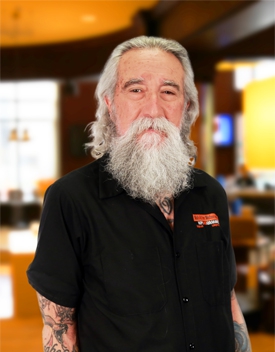
We’ve all seen the safety messages on billboards, stickers and web sites asking people to “Watch for Motorcycles,” “ Look Twice-Save a Life,” etc. It’s hard to imagine anyone would disagree with the messages, but there is a debate on whether these campaigns really do any good.
Safety advocates insist that rider education programs are the key to safety, not fancy advertisements or graphics on a billboard. Others say educating the driving public through programs like Share the Road is the way to reduce crashes between motorists and motorcyclists. Still others adhere to the All the Gear All the Time (ATGAT) mantra as the most effective way to reduce fatalities and injuries.
How can the effectiveness of any of these campaigns be accurately measured? The answer is equivocal. In totality, all the things mentioned above would seem to be effectual, but measuring each component’s part in reducing fatalities and injuries is very difficult. The ATGAT initiative is clearly aimed at reducing injury after a crash, so let’s concentrate on the others. How do you determine which works or which works best?
Motorcycle rights groups and safety enthusiasts joined forces in an attempt to reduce the number of crashes by promoting “awareness” campaigns aimed at encouraging other motorists to be aware of motorcycles on the roadway. There are several differently worded messages on billboards and bumper stickers, but all of them implore motorists to pay attention and be aware that motorcycles are everywhere on the roads during the riding season. Hupy and Abraham, S.C., a well-known law firm with offices in Wisconsin, Illinois and Iowa has spent hundreds of thousands of dollars on free bumper stickers, TV public service announcements and billboards in awareness campaigns dealing with motorcycles, pedestrians and the “texting while driving” problem.
ABATE of Wisconsin, Illinois and Iowa have worked on similar awareness programs, including billboards and each state has a version of a “Share the Road” program which educates young and new car drivers about how to share the road with motorcycles. The Wisconsin ABATE chapter also worked with the state Department of Transportation in a joint venture to encourage unendorsed riders to complete a rider course and get properly licensed. Approximately 40% of the fatalities in Wisconsin involved improperly licensed riders in 2013.
Although Illinois statistics remained relatively unchanged, both Wisconsin and Iowa showed a decline in fatalities. Some would argue that the shortened riding season due to poor weather has had a role in the reduction of crashes, and that cannot be overlooked. But the aggressive push by the shareholders in motorcycle safety with state-wide awareness messages cannot be ignored or dismissed as having no impact.
There are many variables effecting motorcycle crash statistics and with limited empirical studies testing the efficacy of public awareness campaigns, it’s hard to say what works and what doesn’t. Campaigns such as these rely on changing individual behavior and motivating public officials to take action. For instance, Hupy and Abraham, S.C. promoted a campaign in the form of a public awareness message on bumper stickers which say “Yield To Pedestrians.” In addition, Attorney Michael F. Hupy appeared on several local television stations explaining the law regarding pedestrian right of way. Taking it to the next level of motivating public officials to take action, he encouraged police to increase enforcement of car drivers failing to yield the right of way to pedestrians and some police departments even started placing the Yield To Pedestrians stickers on their squad cars.
Awareness campaigns are becoming more and more sophisticated, but to rely solely on messages like these fails to recognize that behavior will not automatically change just by telling someone to act differently. This is the reason the law firm has taken to the streets to aggressively hand out stickers and talk to people at community events about the things that are injuring motorcyclists and pedestrians. It’s also the reason the various ABATE chapters are cooperating with state transportation officials on finding new and creative ways to reduce crashes, injuries and fatalities.
Hopefully the downward trend of crashes and fatalities will continue and each type of campaign can take some level of credit for helping.

